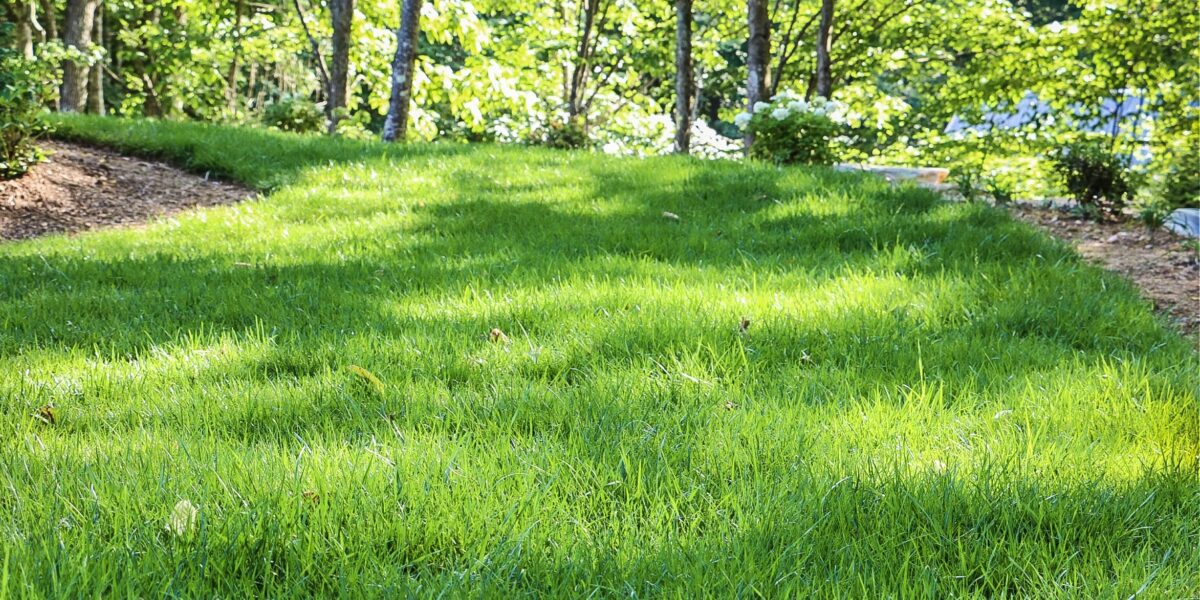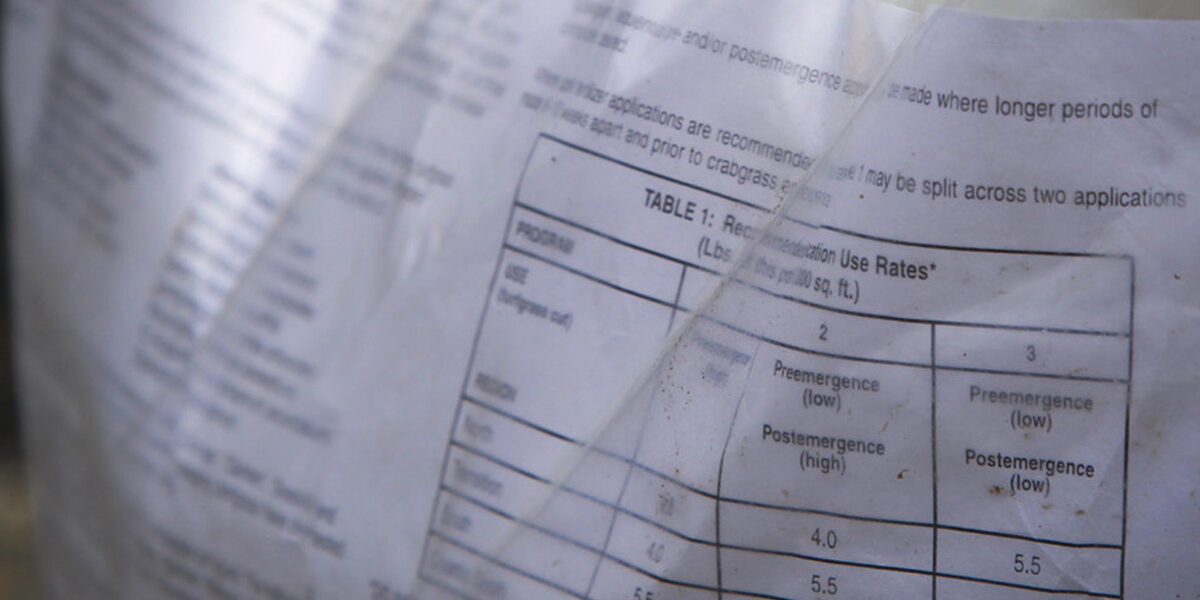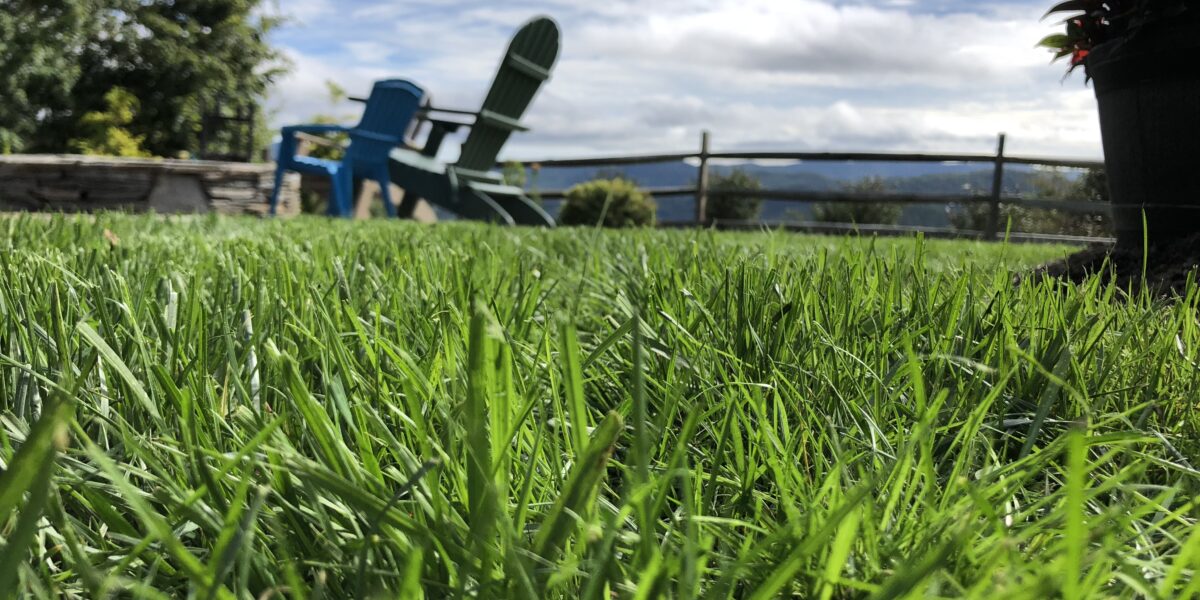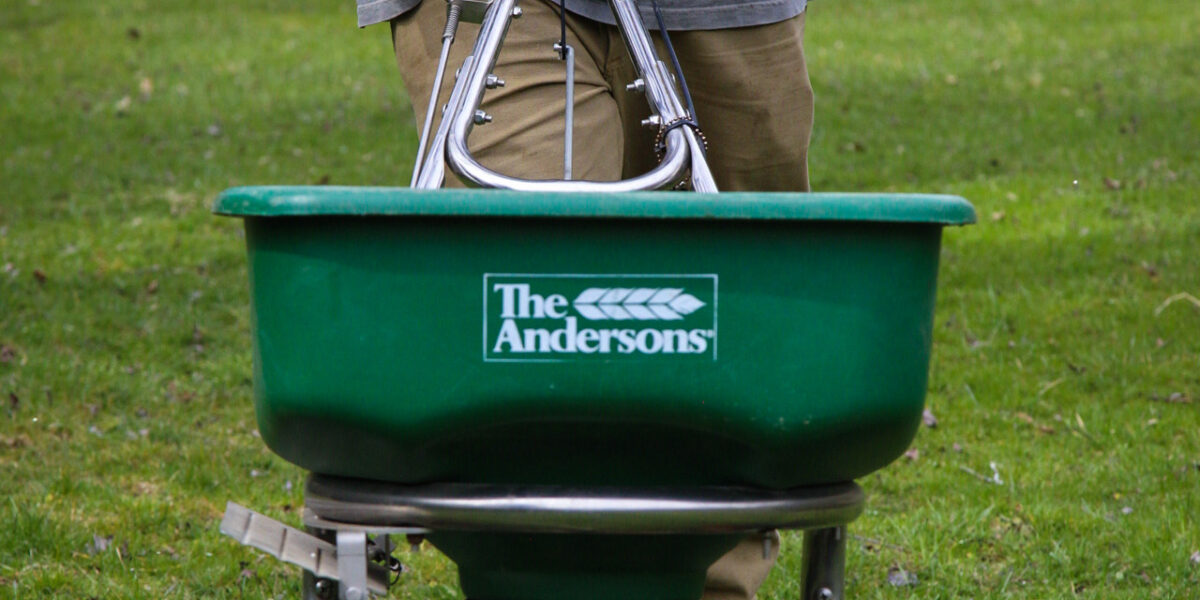Fertilizer is one of the most important management practices used to determine turf grass quality. Fertilizer will affect the general health of the plant. The healthier the plant is, the better the turf grass stand can compete and tolerate competing pests, like weeds, disease and insects. A high quality dense turf will naturally out compete weeds and decreasing or even eliminating the need for herbicides. Also a greater number of insects can be tolerated before an insecticide application is needed. Diseases will also become less likely to occur and will have less of an impact on the aesthetic value of the turf. The nutrition of the plant will also control how often of mowing events are scheduled.
Most weed seeds germinate by becoming exposed to the sun. A dense healthy canopy will provide shade to the soil with the leaf tissue of the turf grass plant and prevent the weed seed from germinating. A turf grass canopy can be thinned when an unfavorable environment emerges. A turf grass stand can sustain up to three stresses before it declines. Some of these stresses are traffic, pH, soil moisture, light intensity, light duration, insect activity, nutrition availability, growth speed, mowing frequency, height of cut, and water availability. To combat some of these stresses it is important to choose the correct turf grass species for the environment it lives in, also choosing a proper mowing height, frequency of the cutting, and to provide effective nutrition throughout the growing season. Most cool season turf grass stands planted on a home lawn cut at 2½” -3 ¾” every seven days sustain a dense canopy with 3-5 lbs of nitrogen per 1,000ft2 per year.
Nitrogen, phosphorus, and potassium are the three macro nutrients provided in common fertilizers. Often there are micro nutrients provided in fertilizers as well. Both macro and micro nutrients are essential in turf grass development and growth. Different turf grass stands need different amounts of each nutrient depending on there environment and plant specie. Turf grass managers should base there fertilizer program on the environment, plant specie, and the function of the turf.
There are many types of fertilizers to choose from, form liquid to granular, quick release, slow release, coated, and organics. Each have pros and cons, again, the environment, turf selection, and function of the turf will dictate witch to use.
Target dates for a fertilization program with four applications of nitrogen a year at one pound of nitrogen per 1,000ft2; early spring, summer, Labor Day, Thanksgiving.
More Services
- Aeration & Seeding
- Boulder Placement
- Fertilization Programs
- Fire Pits & Fireplaces
- Hardscapes
- Landscape Design
- Landscape Installation
- Landscape Maintenance
- Lawn Maintenance
- Mulch & Pine Straw
- Outdoor Lighting
- Patios, Walkways & Driveways
- Perennials & Annuals
- Planting
- Pruning & Trimming
- Retaining Walls & Stairs
- Seasonal Clean ups
- Snow Removal & Ice Management
- Sod & Hydroseeding
- Trees & Shrubs
- Water Features





